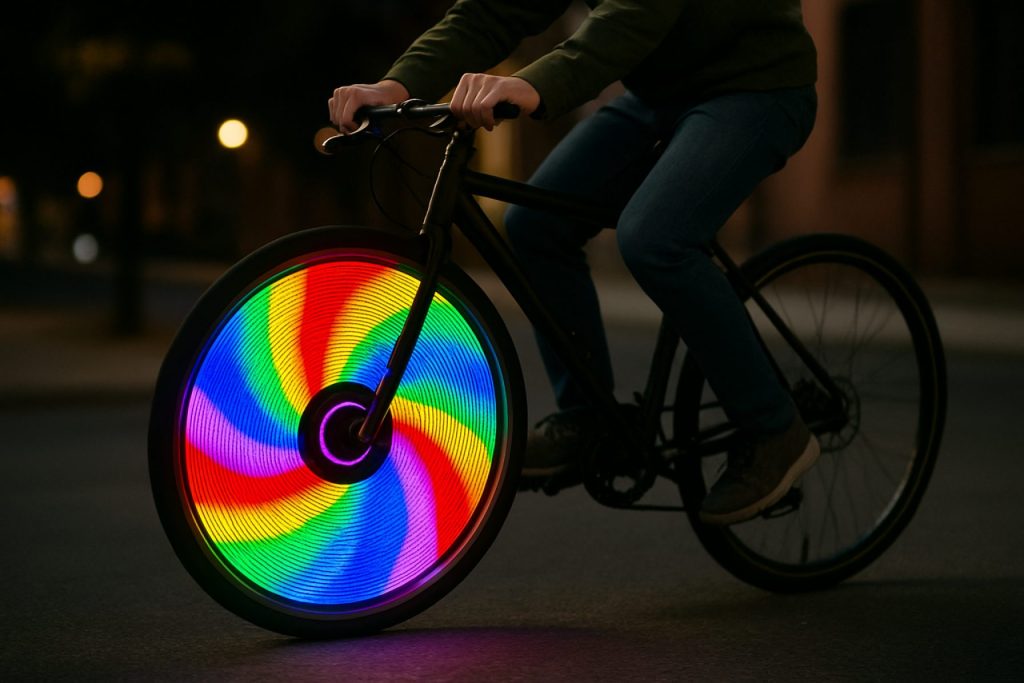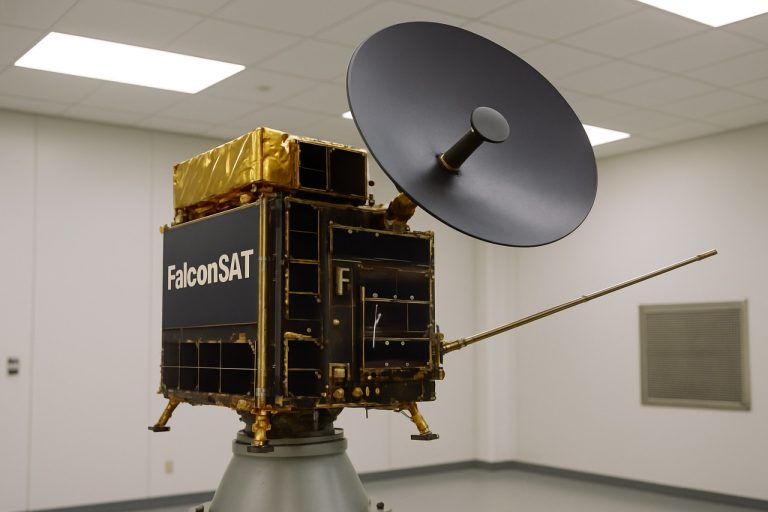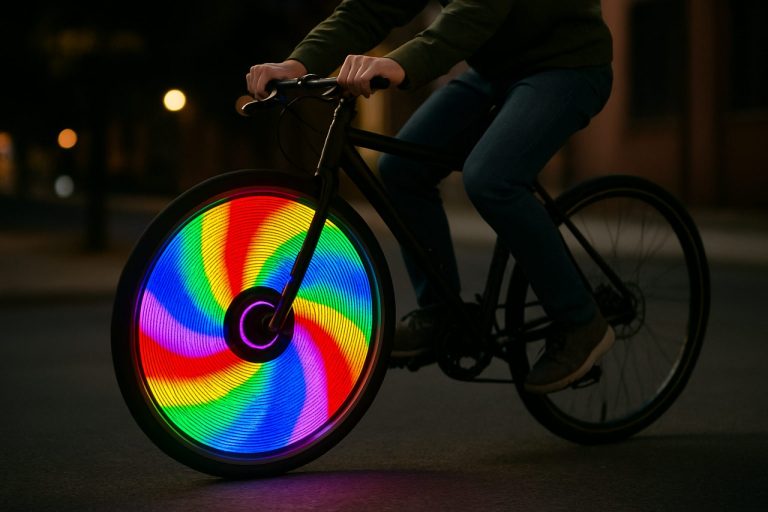
Discover SpokePOV: The Revolutionary LED System Bringing Persistence of Vision to Bicycle Wheels. Explore How This DIY Project Turns Every Ride Into a Moving Light Show.
- Introduction to SpokePOV and Persistence of Vision
- How SpokePOV Works: Technology and Design
- DIY Assembly: Building Your Own SpokePOV
- Programming Custom Patterns and Animations
- Power, Durability, and Weather Resistance
- Safety and Visibility Benefits for Cyclists
- Community Projects and Creative Applications
- Resources and Further Reading
- Sources & References
Introduction to SpokePOV and Persistence of Vision
SpokePOV (Spoke Persistence of Vision) is an innovative electronic device designed to create dynamic visual displays on bicycle wheels using the principle of persistence of vision (POV). Persistence of vision is a phenomenon where multiple discrete images blend into a single, continuous image in the human eye when shown in rapid succession. SpokePOV leverages this effect by mounting a series of LEDs on a bicycle spoke, which are rapidly switched on and off as the wheel spins, producing the illusion of stable, full-color images or animations that appear to float within the wheel’s rotation.
Originally developed as an open-source project by Adafruit Industries, SpokePOV has become a popular platform for both hobbyists and educators interested in electronics, programming, and visual art. The device typically consists of a microcontroller, an array of LEDs, and a battery pack, all of which are attached to the spokes of a bicycle wheel. As the wheel rotates, the microcontroller synchronizes the LED patterns to the wheel’s position, allowing for the display of complex graphics, text, or even animations.
SpokePOV not only serves as a creative outlet but also enhances bicycle visibility and safety, especially at night. The project’s open-source nature encourages customization and experimentation, making it a valuable educational tool for learning about microcontrollers, programming, and the physics of vision. The widespread adoption and adaptation of SpokePOV highlight its impact on the maker community and its role in popularizing persistence of vision displays in everyday applications.
How SpokePOV Works: Technology and Design
SpokePOV (Spoke Persistence of Vision) operates by leveraging the human eye’s tendency to blend rapidly flashing lights into continuous images—a phenomenon known as persistence of vision. The core technology consists of a microcontroller-driven array of LEDs mounted along a bicycle wheel’s spoke. As the wheel spins, the microcontroller synchronizes the illumination of specific LEDs at precise intervals, effectively “painting” images or patterns in midair as the wheel rotates. This synchronization is crucial: the microcontroller must account for the wheel’s rotational speed, which it typically measures using a magnetic sensor or hall-effect sensor attached to the fork or frame. This sensor provides real-time feedback, allowing the system to adjust the timing of the LED flashes to maintain image stability regardless of speed fluctuations.
The design of SpokePOV is both modular and customizable. Users can program their own graphics or animations using dedicated software, which then uploads the data to the microcontroller via a USB or serial interface. The LED array is usually powered by compact, rechargeable batteries mounted on the wheel hub, ensuring minimal impact on wheel balance and ride quality. The entire assembly is engineered to be lightweight and weather-resistant, accommodating the rigors of outdoor cycling. The open-source nature of the original SpokePOV project, developed by Adafruit Industries, has encouraged a community of makers to innovate further, adding features such as multi-color LEDs, wireless programming, and even interactive displays. This blend of accessible hardware and flexible software has made SpokePOV a popular platform for both educational and artistic applications in cycling technology.
DIY Assembly: Building Your Own SpokePOV
Building your own SpokePOV device is a rewarding DIY electronics project that combines soldering, microcontroller programming, and creative design. The SpokePOV kit, originally developed by Adafruit Industries, provides all the necessary components, including a printed circuit board (PCB), LEDs, a microcontroller, and mounting hardware. Assembly begins with soldering the LEDs and other electronic components onto the PCB, following the detailed instructions provided by the kit manufacturer. Careful attention to LED orientation and placement is crucial, as incorrect installation can affect the display patterns.
Once the hardware is assembled, the next step involves programming the microcontroller with custom images or patterns. This is typically done using a USB or serial programmer and the open-source SpokePOV software, which allows users to design and upload graphics that will appear as the wheel spins. The software supports multiple frames, enabling simple animations or static images. After programming, the SpokePOV board is securely attached to the bicycle spokes using the included mounting brackets, ensuring stability and proper alignment for optimal visual effect.
For those interested in customization, the open-source nature of the SpokePOV project encourages modifications, such as adding more LEDs for higher resolution or integrating wireless data transfer for on-the-fly image updates. Community forums and resources, such as the Adafruit Support Forums, offer valuable troubleshooting tips and inspiration for advanced builds. Overall, assembling a SpokePOV is an accessible entry point into microcontroller-based art and wearable technology.
Programming Custom Patterns and Animations
Programming custom patterns and animations for the SpokePOV system involves a blend of hardware interfacing and creative digital design. The SpokePOV kit, developed by Adafruit Industries, allows users to upload their own bitmap images and animations to the device’s onboard microcontroller, which then displays these visuals as the bicycle wheel spins. The process begins with the SpokePOV software, a cross-platform application that lets users draw or import images, convert them into the appropriate format, and preview how they will appear in motion.
To create custom patterns, users can either use the built-in editor or import standard bitmap files. The software translates these images into a series of binary data, which is then transferred to the SpokePOV board via a USB or serial programmer. The microcontroller stores multiple frames, enabling the display of complex animations as the wheel rotates. Timing and synchronization are crucial; the system uses a magnetic sensor to detect wheel position, ensuring that each frame is displayed at the correct moment for a seamless visual effect.
Advanced users can further customize their animations by modifying the open-source firmware, written in C, to adjust frame rates, color sequencing (for multi-color versions), or even add interactive features. The open nature of the SpokePOV platform encourages experimentation and has led to a vibrant community sharing patterns, code, and tips on forums such as the Adafruit Forums. This flexibility makes SpokePOV a powerful tool for both educational and artistic projects.
Power, Durability, and Weather Resistance
The SpokePOV (Spoke Persistence of Vision) system is designed to operate efficiently on the limited power available from compact, bike-mounted batteries. Typically, SpokePOV devices use AA or AAA batteries, with some versions supporting rechargeable NiMH cells to enhance sustainability and reduce long-term costs. Power consumption is optimized through the use of energy-efficient LEDs and microcontrollers that enter low-power states when not actively displaying images. Under normal usage, a set of fresh batteries can power the device for several hours of continuous operation, making it suitable for daily commutes or nighttime rides.
Durability is a key consideration, as SpokePOV units are mounted directly on bicycle spokes and are subject to constant vibration, shock, and centrifugal forces. The printed circuit boards (PCBs) are typically reinforced and use through-hole components to withstand mechanical stress. The LEDs and electronic components are soldered securely, and the entire assembly is often coated with a conformal layer or encased in a protective housing to prevent damage from impacts or accidental knocks.
Weather resistance is crucial for outdoor use. SpokePOV kits and commercial variants frequently employ water-resistant or waterproof enclosures to shield sensitive electronics from rain, mud, and road debris. Sealed battery compartments and gaskets around critical joints help prevent moisture ingress. However, users are generally advised to avoid submerging the device or exposing it to high-pressure water streams. For enhanced longevity, some enthusiasts further weatherproof their units with additional silicone coatings or heat-shrink tubing, as recommended by the Adafruit Industries official documentation.
Safety and Visibility Benefits for Cyclists
SpokePOV (Spoke Persistence of Vision) systems offer significant safety and visibility benefits for cyclists, particularly during low-light conditions or nighttime riding. By utilizing arrays of LEDs mounted on bicycle spokes, these devices create bright, dynamic images or patterns as the wheels spin, making the bicycle highly visible from the side—a critical angle often overlooked by traditional front and rear lights. This enhanced lateral visibility is crucial at intersections and in urban environments, where side-on collisions are a common risk for cyclists.
The programmable nature of SpokePOV systems allows users to customize the displayed patterns, increasing the likelihood of catching the attention of motorists and pedestrians. Studies have shown that moving, colorful lights are more effective at attracting attention than static reflectors or single-point lights, thereby improving a cyclist’s conspicuity on the road. Additionally, the persistence of vision effect ensures that the images remain clear and noticeable even at varying speeds, maintaining consistent visibility regardless of cycling pace.
Beyond visibility, SpokePOV devices can also serve as a platform for communicating signals, such as turn indicators or warning messages, further enhancing safety. Some advanced models integrate with braking systems or ambient light sensors to automatically adjust brightness and patterns based on riding conditions. These features align with recommendations from organizations like the National Highway Traffic Safety Administration and Cycling UK, which emphasize the importance of maximizing cyclist visibility to reduce accident rates. As urban cycling continues to grow, SpokePOV technology represents a valuable tool in promoting safer, more visible cycling environments.
Community Projects and Creative Applications
SpokePOV (Spoke Persistence of Vision) has inspired a vibrant community of makers, artists, and cycling enthusiasts to explore creative applications that go far beyond its original design. At its core, SpokePOV is an open-source hardware project that enables users to create programmable LED displays on bicycle wheels, transforming ordinary bikes into moving canvases. This flexibility has led to a wide range of community-driven projects, from interactive art installations to advocacy campaigns and educational workshops.
One notable application is the use of SpokePOV in public art and urban events, where cyclists display custom animations, messages, or even real-time data visualizations as they ride. These projects often foster community engagement and promote cycling culture in cities. For example, some groups have used SpokePOV to display safety messages or route information during night rides, enhancing both visibility and communication among participants.
Educational institutions and makerspaces have also adopted SpokePOV as a hands-on tool for teaching electronics, programming, and design. By assembling and customizing their own SpokePOV kits, students gain practical experience with microcontrollers, LEDs, and software, while also expressing their creativity through unique visual patterns. The open-source nature of the project encourages collaboration and sharing of designs, with many users contributing code, artwork, and technical improvements to the broader community.
The ongoing evolution of SpokePOV is documented and supported by online forums, tutorials, and galleries, such as those hosted by Adafruit Industries, which continues to serve as a hub for innovation and inspiration within the SpokePOV community.
Resources and Further Reading
For those interested in exploring SpokePOV (Spoke Persistence of Vision) further, a variety of resources are available that cover both the technical and creative aspects of this innovative bicycle lighting technology. The original SpokePOV project, developed by Limor Fried, is thoroughly documented on the Adafruit Industries website, which provides open-source hardware files, assembly instructions, and software downloads. This resource is invaluable for DIY enthusiasts and educators seeking to build or modify their own SpokePOV systems.
For a deeper understanding of the electronics and programming involved, the Adafruit Learning System offers step-by-step tutorials, troubleshooting tips, and community forums where users share modifications and display patterns. Additionally, the Instructables platform features user-generated guides and project variations, showcasing creative implementations and enhancements.
Academic and technical discussions on persistence of vision displays, including SpokePOV, can be found in publications indexed by IEEE Xplore and ACM Digital Library, which provide research papers on display technology, microcontroller programming, and human visual perception.
For community engagement and troubleshooting, online forums such as the Adafruit Forums and the Arduino Subreddit are active spaces for exchanging ideas, seeking advice, and sharing project outcomes. These resources collectively support both beginners and advanced users in their exploration of SpokePOV technology.



